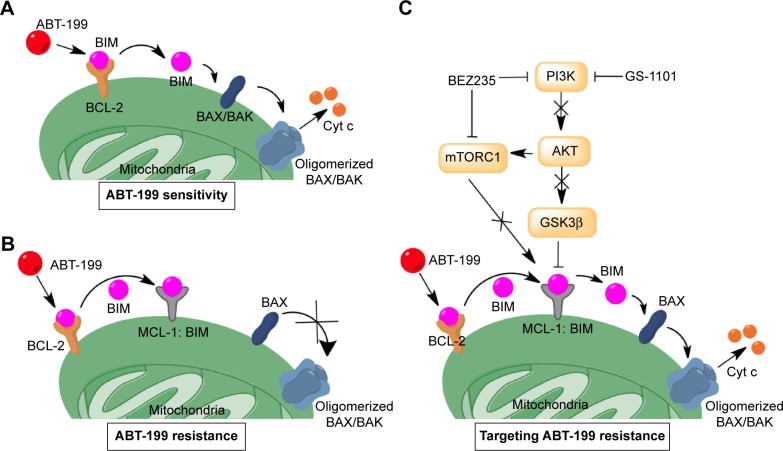Figure 1.
Our model for venetoclax resistance and approaches to overcome it by targeting PI3K-mTOR signaling in addition to direct regulation of BCL-xL and MCL-1 levels.
Notes: (A) ABT-199 targets BCL-2 in sensitive cells and displaces BIM to cause BAX-mediated apoptosis. (B) As ABT-199 does not target MCL-1 and BCL-xL, these BCL-2 family proteins confer resistance by sequestering BIM that is displaced from BCL-2. (C) NVP-BEZ235 inhibits the PI3K and mTOR pathways, with idelalisib (GS-1101) inhibiting PI3K, both of which interfere with MCL-1 stability, thereby freeing BIM, which then activates BAX, leading to release of cytochrome c and apoptosis (Reproduced from Choudhary GS, Al-Harbi S, Mazumder S, et al. MCL-1 and BCL-xL-dependent resistance to the BCL-2 inhibitor ABT-199 can be overcome by preventing PI3K/AKT/mTOR activation in lymphoid malignancies. Cell Death Dis. 2015;6:e159351).
Abbreviations: BCL-2, B-cell lymphoma-2; PI3K, phosphatidylinositol 3-kinase; mTOR, mammalian target of rapamycin kinase.

